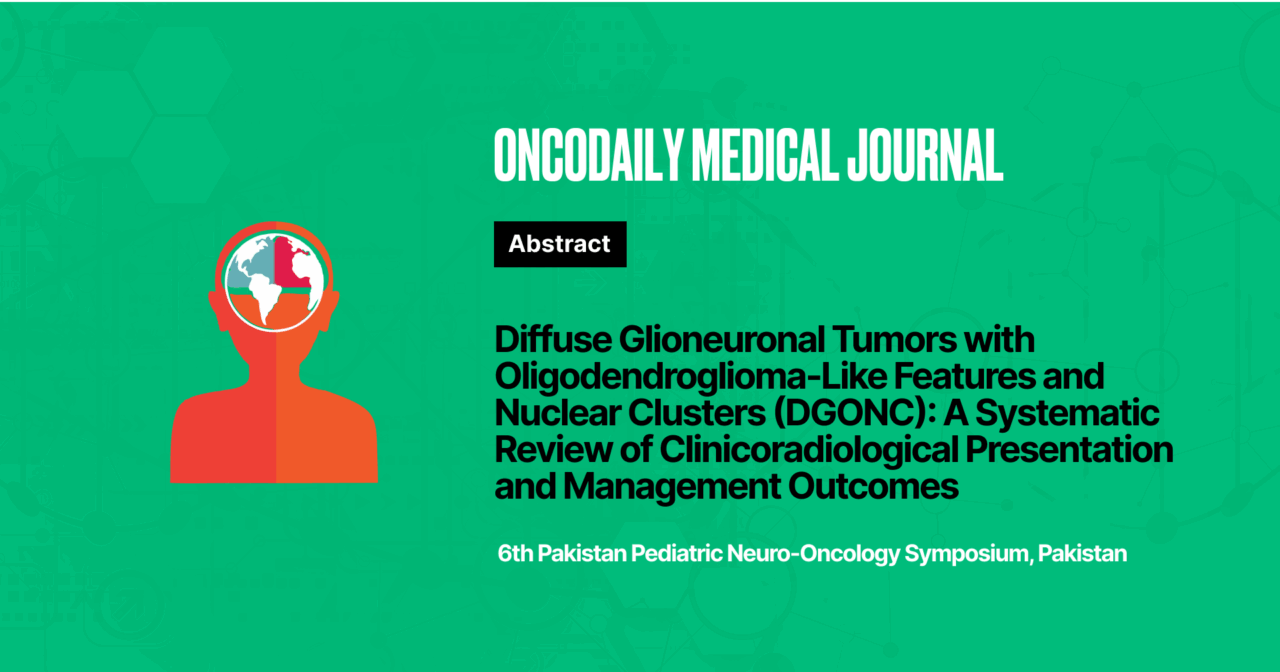Diffuse Glioneuronal Tumors with Oligodendroglioma-Like Features and Nuclear Clusters (DGONC): A Systematic Review of Clinicoradiological Presentation and Management Outcomes
Abstract
Introduction: Diffuse glioneuronal tumors with oligodendroglioma-like features and nuclear clusters (DGONC) are rare tumors of the central nervous system, having been added as a provisional diagnosis in the 2021 World Health Organization (WHO) Classification of Tumors of the central nervous system (CNS).
Methodology: A comprehensive search was conducted using PubMed and Google Scholar, PRISMA guidelines, to identify relevant studies published between 2020 and 2025. A total of 10 articles reporting on DGONC cases were included. variables. The objective of the study is to characterize the clinic-radiological manifestations, molecular profile and treatment approaches with the outcomes in patients diagnosed with DGONC.
Results: Out of 19 patients, DGONC was reported in 11(57.9%) children and 8(42.1%) adults, with a mean age of 9.2±1.79 and 28.6±11.2 years, respectively. The most frequent presenting complaint was seizures, seen in 14(73.7%) of cases. On average, symptoms lasted for about 7 months before diagnosis. Magnetic resonance image (MRI) findings showed that in 17(89.5%) cases lesion was hyperintense on T2-weighted images with poor contrast enhancement in 12(66.7%), and low apparent diffusion coefficient (ADC) values were seen in 18(93.8%) of the patients. All tumors were located in the supratentorial region. Genetic analysis showed that the most common alteration was monosomy 14 along with gain of chromosome 17q in 10(52.6%) patients. All patients underwent surgery. Gross total resection was achieved in 60% of them. After surgery, 42.2% of patients received temozolomide as part of adjuvant therapy, and 36.8% were treated with radiotherapy. At an average follow-up of 42.5 months, overall survival was favorable in 94.7%. Only 15.8% of patients had any neurological deficits.
Conclusion: DGONC is a slow growing supratentorial tumor of children with a lack of contrast enhancement, low ADC, and T2 hyperintense signals on MRI. Surgical therapy combined with adjuvant therapy gives a favorable post-treatment survival of roughly four years.
Conflict of Interest: None
Funding: None
Disclosure Statement: None
License: This article is published under the terms of the Creative Commons Attribution 4.0 International License (CC BY 4.0).
© Arooj Kiran, 2025. This license permits unrestricted use, distribution, and reproduction in any medium, provided the original author and source are credited.





